Think about where you live. Have you ever been in a strong storm? Have you ever experienced flooding, a wildfire, or really hot days? Even though these events can be scary, there is so much you can do in your own community to make it better able to handle these challenges. When we work together to protect our communities from environmental hazards, we are building community resilience.
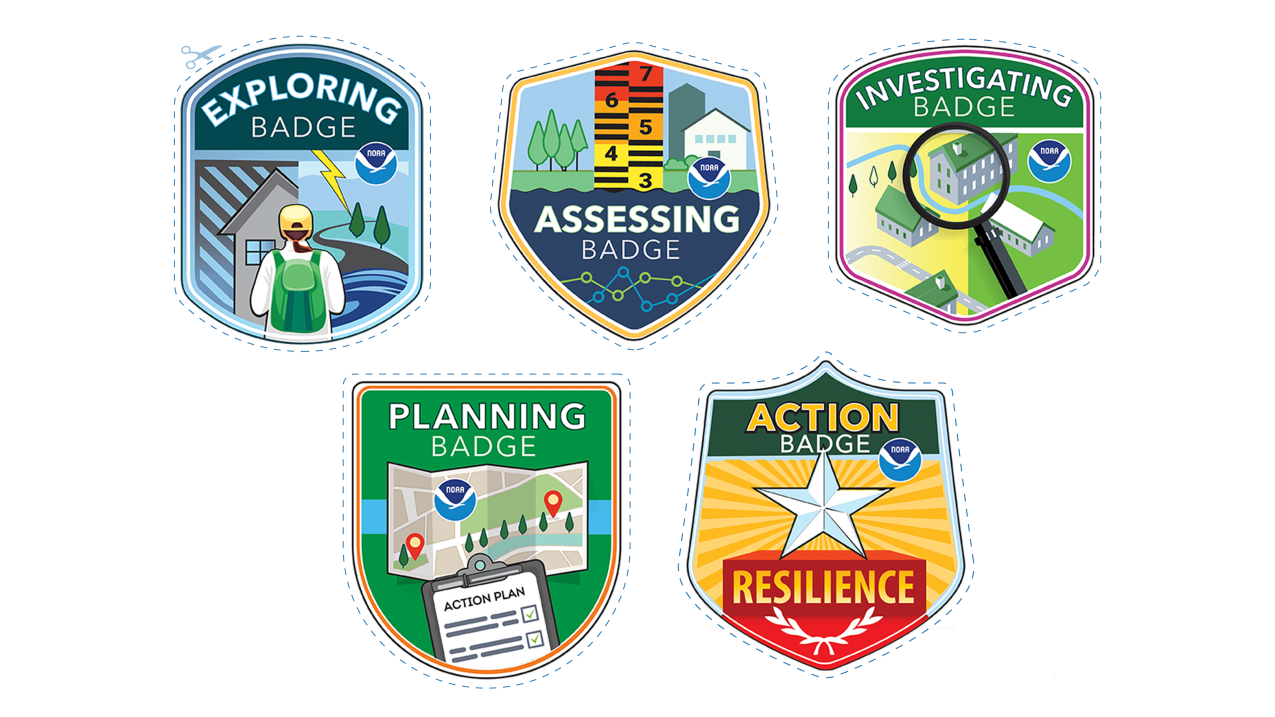
Five badges that correspond with the U.S. Climate Resilience Toolkit steps to resilience. (Image credit: Keri Maxfield, Nurture Nature Center)
This Earth Week, celebrate everything that nature does for us by taking steps to increase climate resilience in your community. Families, educators, students, community members, and any one else who is interested can improve community resilience and earn fun badges along the way! Download all five badges and print them at home, share them on social media, or show them to your family and friends.
Environmental hazards are happening more often because of climate change. The U.S. Climate Resilience Toolkit has information and resources about climate resilience. These badges line up with the steps to resilience in the toolkit. You don't need to complete the badges in order; improving community resilience can happen in many ways, and you might find yourself revisiting these steps over time.
Exploring badge
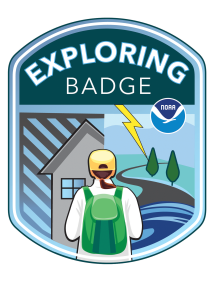
Get off to a great start with the steps to resilience by exploring climate-related hazards and learning about what issues affect your community’s health and sustainability. Knowing which hazards are most likely to impact your community, whether that be hurricanes, heat waves, or ice storms, is the first step in becoming more prepared.
To earn your badge: Explore the hazards in your county with this interactive disaster and risk mapping tool from NOAA National Centers for Environmental Information. Using the County Risk Assessment tool, click on your county and look at the list of historic risks and the combined weather and climate risk to determine possible hazards your community may face.
Once you have identified the hazards that are most likely to affect your community, you’ve earned the exploring badge! Continue your journey to resilience if you can.
Assessing badge
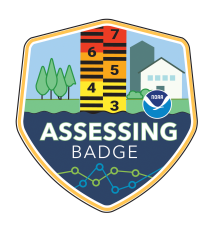
To earn the assessing badge, consider your community’s vulnerabilities and where there is the most risk from identified hazards. To assess risk, consider how likely the hazard is to occur and how damaging it could be. Are there certain parts of your community that are more likely to be harmed by a potential hazard?
When you’re considering your community’s vulnerability, make sure you think about which parts of your community are at the greatest risk. You can look at vulnerabilities in your community using the same County Risk Assessment tool used to earn your first badge. In what ways is your county particularly vulnerable?
After answering these questions by doing some research into your community, you’ve earned the assessing badge!
Investigating badge
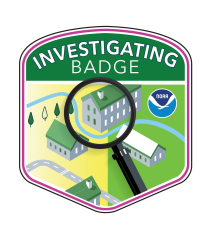
To earn the investigating badge, investigate options and solutions to the risks your community faces by learning about how other communities have responded to similar risks. What solutions have other communities used to address the problems you are investigating? Would those solutions work in your community too? Try to generate a list of solutions your community might use.
Use this coloring sheet to learn more about how a community can increase resilience. As you color, consider:
- How have people prepared buildings, schools, roads, parks, shorelines, and other places to face weather and climate hazards?
- What other opportunities are there for people of all ages to get involved in supporting their resilient community?
Once you have identified strategies that communities can use to prepare for future hazards, congratulations! You snagged the investigating badge.
Planning badge
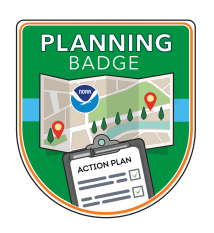
The next step on the path to resilience involves prioritizing and planning solutions to the risks your community faces. While city planners and other leaders consider the costs, benefits, and resources needed to make solutions happen on large scales, individuals can contribute in many ways. Is there anything that you or your family can do to help better prepare your community for hazards? Are there organizations in your community where you could volunteer to help out? Are there any opportunities for you to make your voice heard?
Here are some additional ideas to consider:
- Build a rain garden offsite link in your community.
- Build an evacuation or disaster preparedness kit for your family. Consider the hazards your community is most likely to face. How would you prepare for those hazards specifically? Learn more at Ready.gov/kit
- Participate in a citizen science project.
You are almost through the steps to resilience. After you think through how you can take action, collect the planning badge!
Action badge
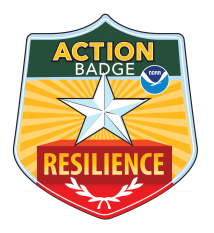
Now it is time to take action. You are acting on solutions, and even small actions at your own home can make a difference. Consider making a pledge: "I, [enter name], pledge to take action to improve resilience in my community."
Congratulations! You made it through the steps to resilience. You are a resilience star and just earned the action badge!
Once you have taken action, continue to monitor and assess your progress to make sure your solutions are working. Are the actions you take making a positive difference? How can you make your actions work more effectively? Don't be surprised if you find yourself exploring, assessing, investigating, and planning all over again!
These badges were developed in partnership with Nurture Nature Center offsite link, a NOAA Environmental Literacy Program grantee. For more information, see Environmental Literacy Program grantee resources and NOAA's Community Resilience Education Theory of Change.



